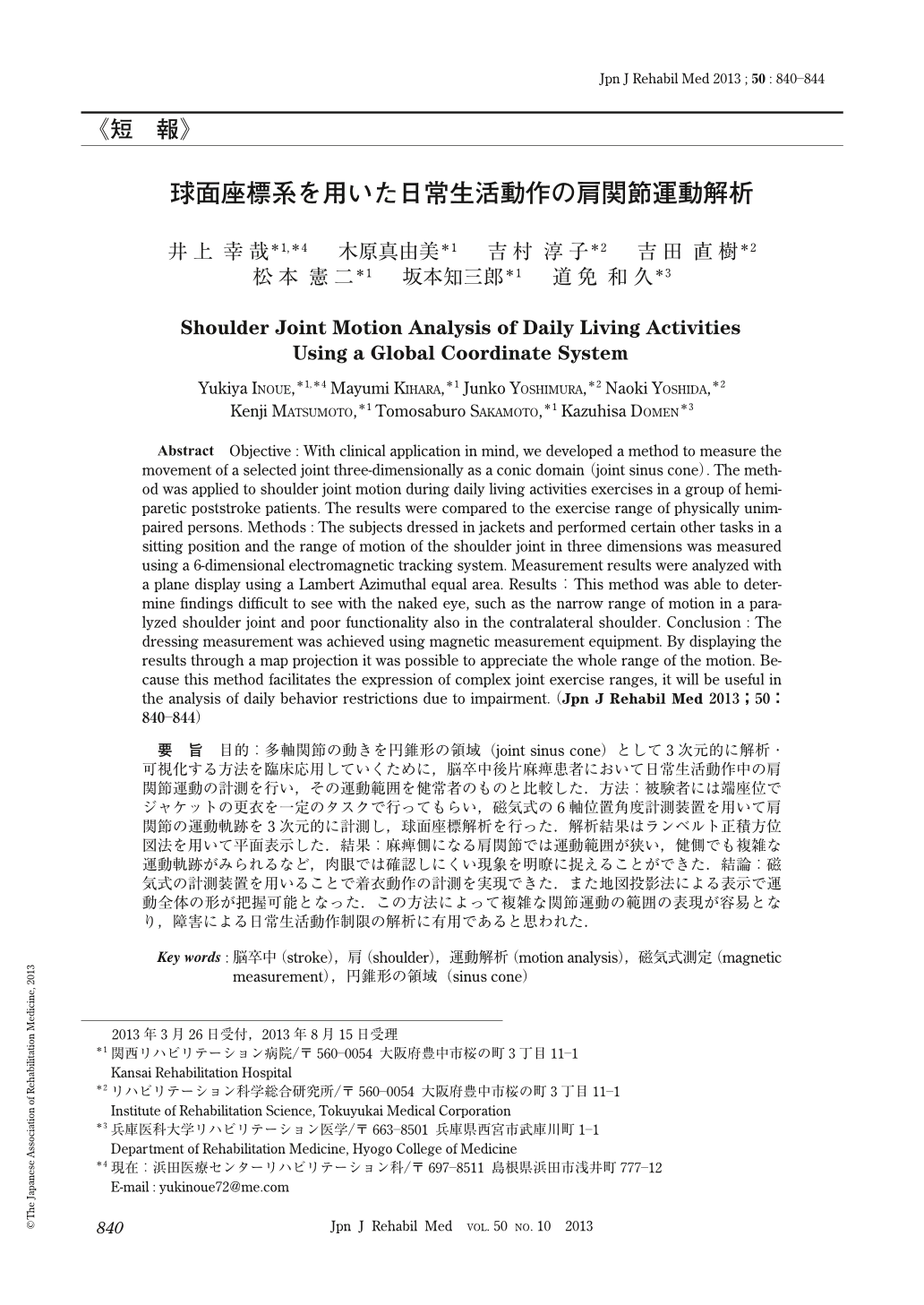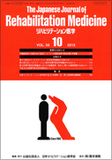Japanese
English
- 販売していません
- Abstract 文献概要
- 1ページ目 Look Inside
- 参考文献 Reference
要旨 目的:多軸関節の動きを円錐形の領域(joint sinus cone)として3次元的に解析・可視化する方法を臨床応用していくために,脳卒中後片麻痺患者において日常生活動作中の肩関節運動の計測を行い,その運動範囲を健常者のものと比較した.方法:被験者には端座位でジャケットの更衣を一定のタスクで行ってもらい,磁気式の6軸位置角度計測装置を用いて肩関節の運動軌跡を3次元的に計測し,球面座標解析を行った.解析結果はランベルト正積方位図法を用いて平面表示した.結果:麻痺側になる肩関節では運動範囲が狭い,健側でも複雑な運動軌跡がみられるなど,肉眼では確認しにくい現象を明瞭に捉えることができた.結論:磁気式の計測装置を用いることで着衣動作の計測を実現できた.また地図投影法による表示で運動全体の形が把握可能となった.この方法によって複雑な関節運動の範囲の表現が容易となり,障害による日常生活動作制限の解析に有用であると思われた.
Abstract Objective : With clinical application in mind, we developed a method to measure the movement of a selected joint three-dimensionally as a conic domain (joint sinus cone). The method was applied to shoulder joint motion during daily living activities exercises in a group of hemiparetic poststroke patients. The results were compared to the exercise range of physically unimpaired persons. Methods : The subjects dressed in jackets and performed certain other tasks in a sitting position and the range of motion of the shoulder joint in three dimensions was measured using a 6-dimensional electromagnetic tracking system. Measurement results were analyzed with a plane display using a Lambert Azimuthal equal area. Results : This method was able to determine findings difficult to see with the naked eye, such as the narrow range of motion in a paralyzed shoulder joint and poor functionality also in the contralateral shoulder. Conclusion : The dressing measurement was achieved using magnetic measurement equipment. By displaying the results through a map projection it was possible to appreciate the whole range of the motion. Because this method facilitates the expression of complex joint exercise ranges, it will be useful in the analysis of daily behavior restrictions due to impairment.

Copyright © 2013, The Japanese Association of Rehabilitation Medicine. All rights reserved.


